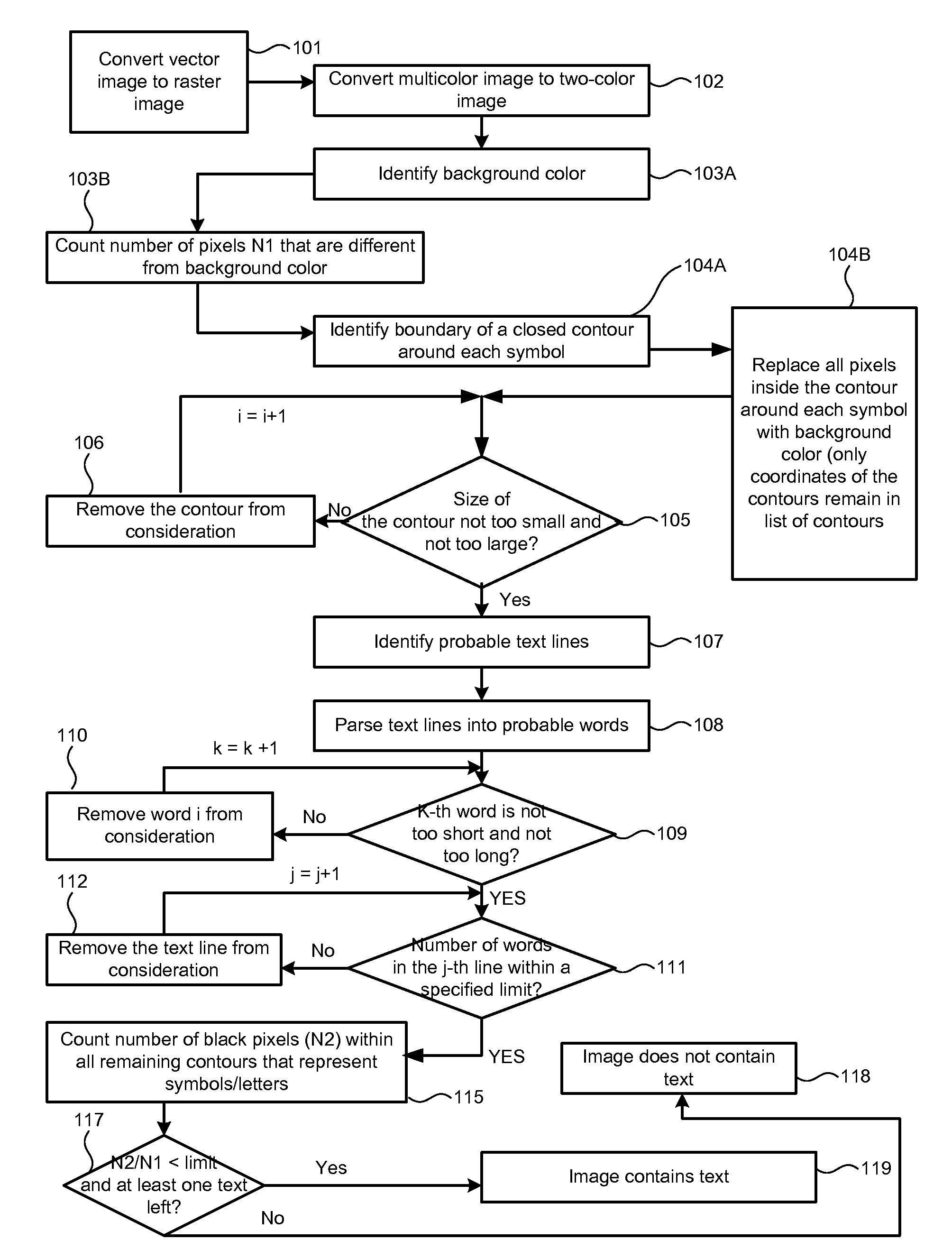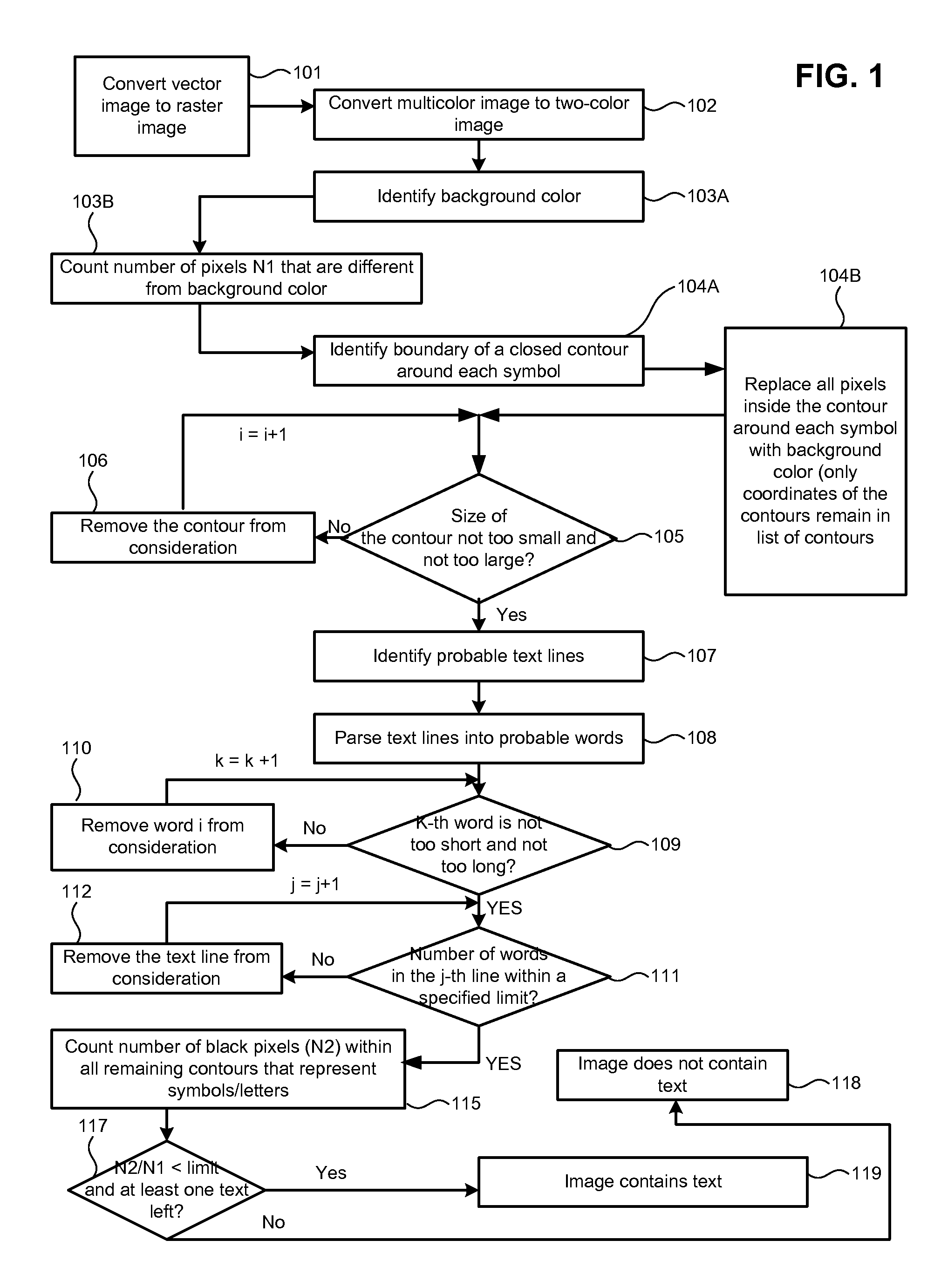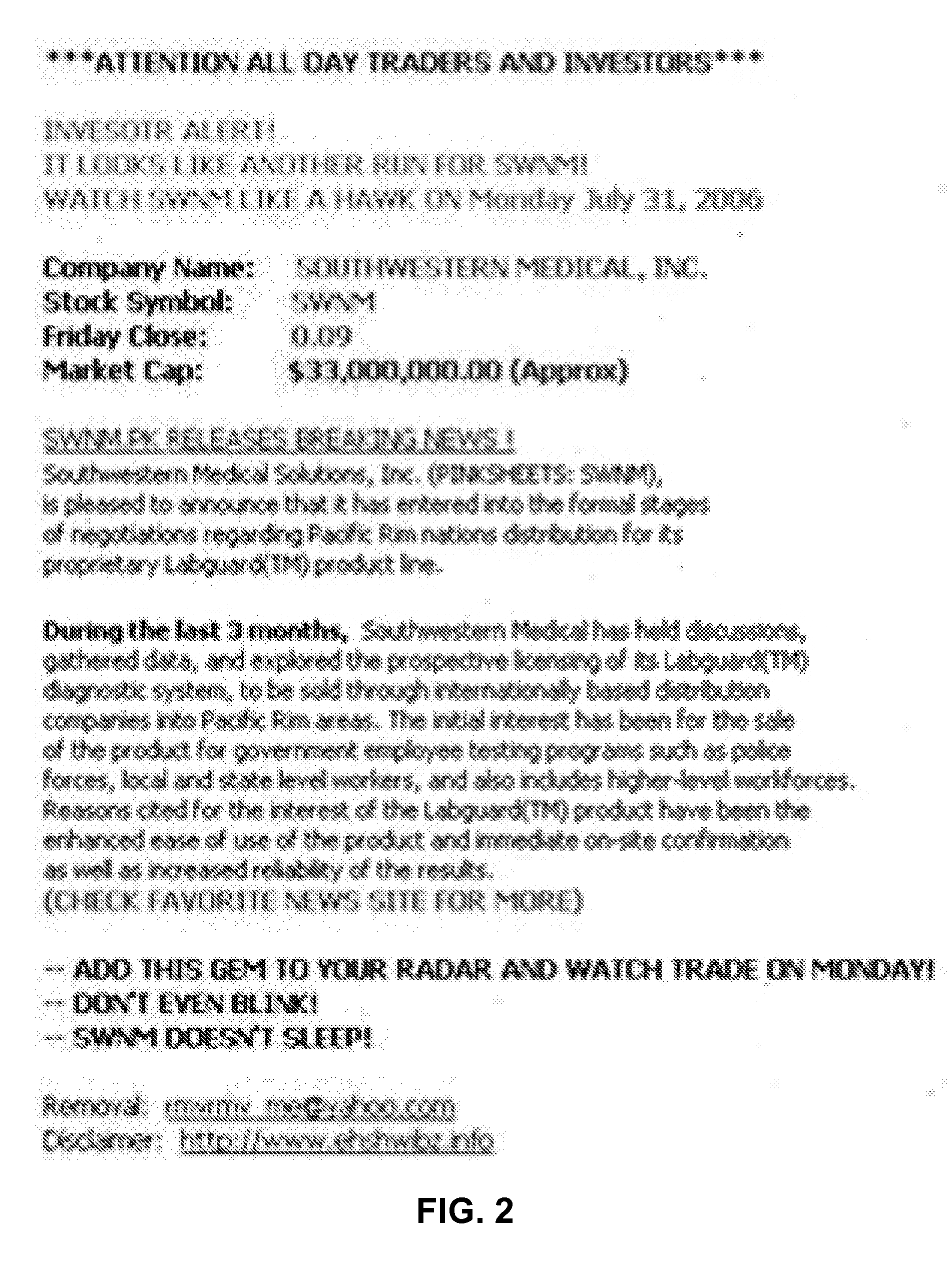System and method for identifying text-based spam in rasterized images
- Summary
- Abstract
- Description
- Claims
- Application Information
AI Technical Summary
Benefits of technology
Problems solved by technology
Method used
Image
Examples
Embodiment Construction
[0043]Reference will now be made in detail to the preferred embodiments of the present invention, examples of which are illustrated in the accompanying drawings.
[0044]FIG. 1 illustrates an exemplary embodiment of the method for identifying text in an image according to one embodiment of the invention. As shown in FIG. 1, in step 101, the image is first converted, if necessary, from a vector form into a raster form (in other words, essentially, to a bitmap-type image). In step 102, if the image is a color image (see FIG. 2), it is converted to a two-color image (see FIG. 3). Although for purposes of the analysis it doesn't matter what the two colors are (they can be black and white, they can be red and green, and so on—as long as they are different), in the remainder of this discussion black and white will be used as examples. An example of such an image is illustrated in FIG. 2, prior to conversion to a two-color image, and the image in FIG. 3 is the black / white image after the conv...
PUM
 Login to View More
Login to View More Abstract
Description
Claims
Application Information
 Login to View More
Login to View More - R&D Engineer
- R&D Manager
- IP Professional
- Industry Leading Data Capabilities
- Powerful AI technology
- Patent DNA Extraction
Browse by: Latest US Patents, China's latest patents, Technical Efficacy Thesaurus, Application Domain, Technology Topic, Popular Technical Reports.
© 2024 PatSnap. All rights reserved.Legal|Privacy policy|Modern Slavery Act Transparency Statement|Sitemap|About US| Contact US: help@patsnap.com










